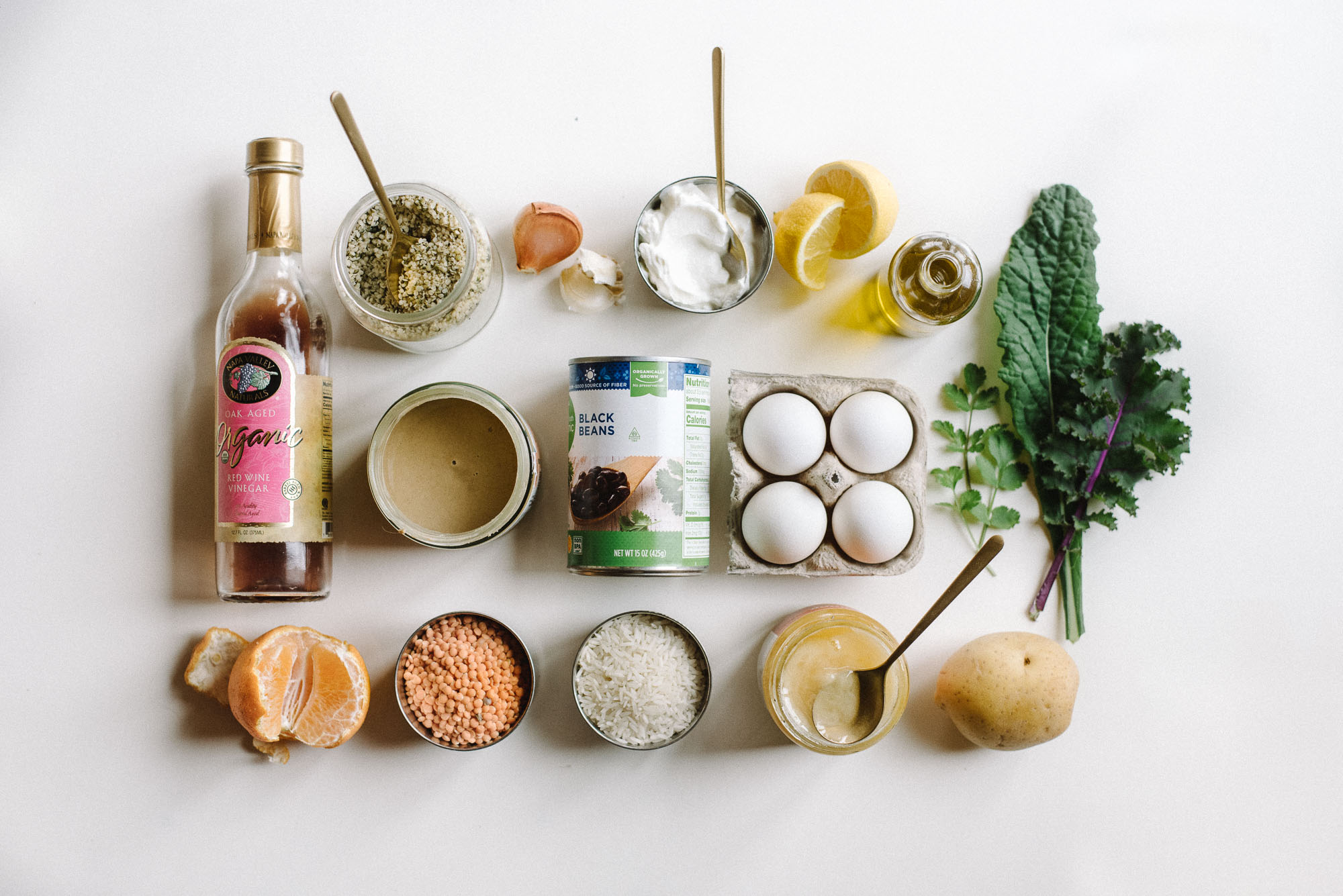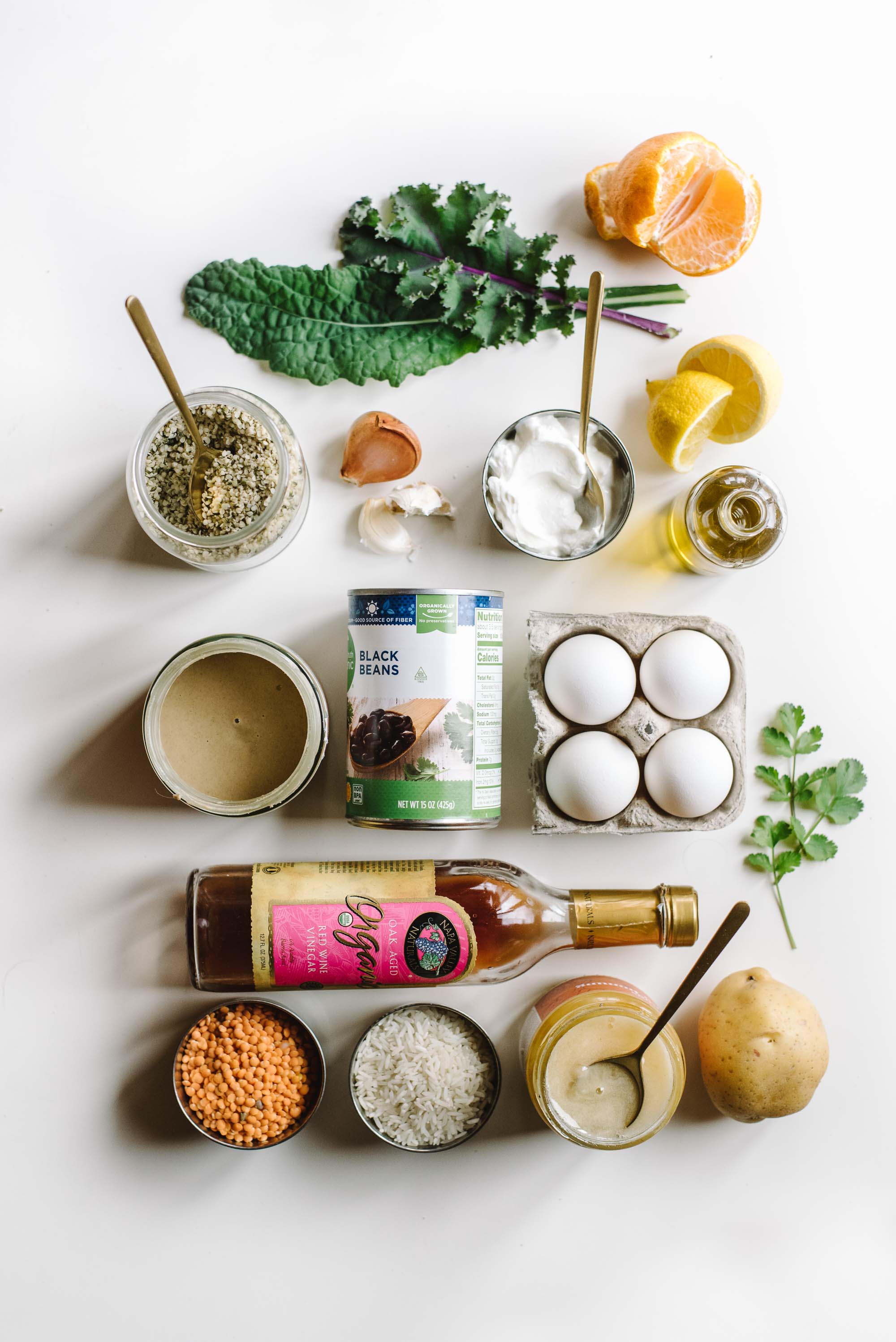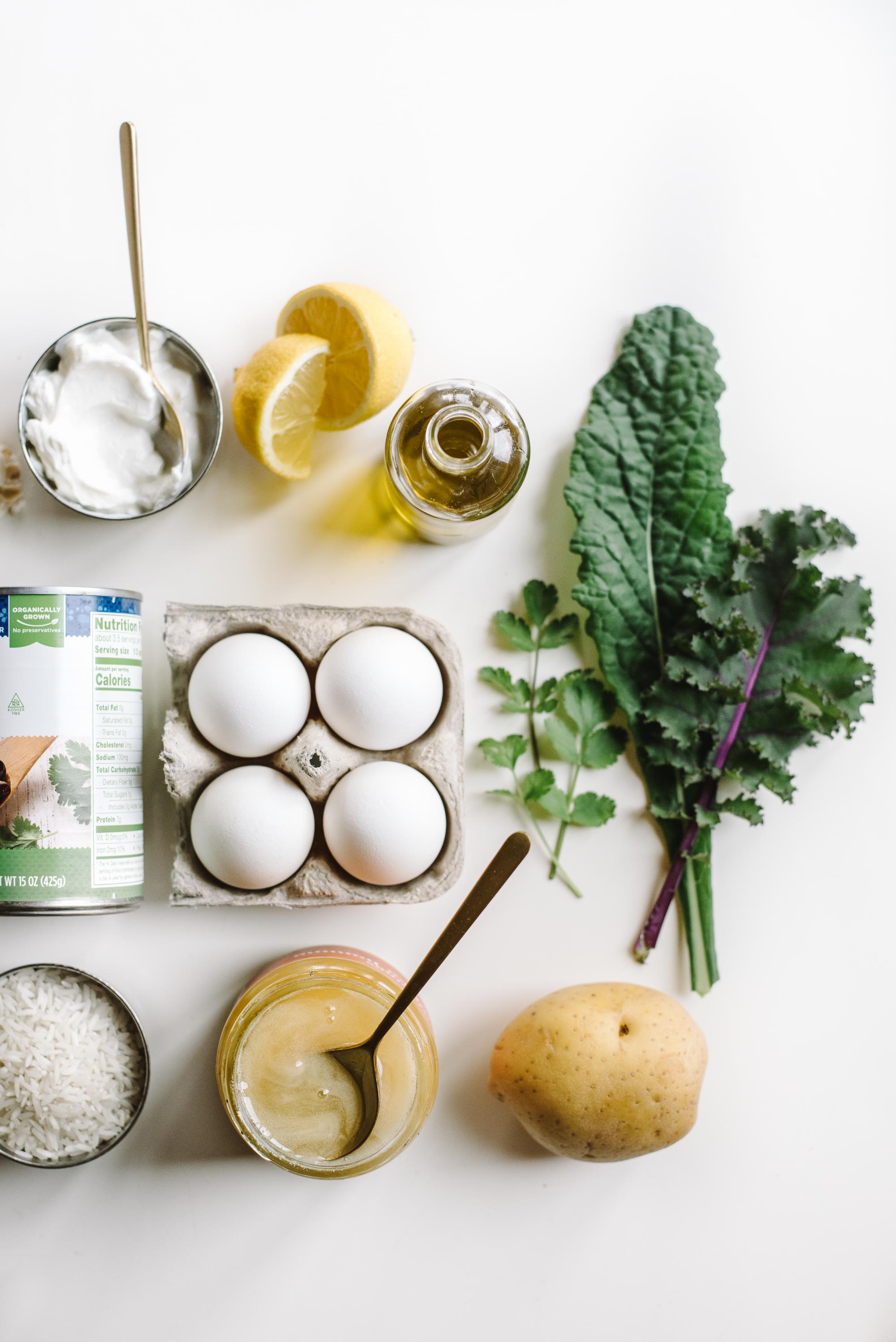
Getting in the habit of cooking for yourself can be hard. I get it. I’ve always been drawn to the warm world of the kitchen, but I know many people aren’t—and I understand why. The fridge, the stove, even the cutting board can feel like boring, stressful, time-consuming annoyances. But it can be easier.
Really, truly easy. I promise.
The key? Having the right foods on hand so you can feed yourself when you’re hungry.
Today, I’m sharing the nuts-and-bolts basics you need to stock a vegetarian kitchen—whole food staples that will keep you fed and happy.
With these ingredients, you can step into the kitchen assured you’ll be able to get food on the table. So you don’t default to take-out or delivery every night. So you’ve got some easy lunches to pack. So your body can thrive with nourishing whole foods. And so you can save money while you’re at it.

Though I am not vegetarian, I eat a mostly plant-based diet. The ingredients I share here are the bare bones basics I use on a regular basis, through all seasons. As you become more comfortable in the kitchen, you’ll find your own favorites, mix and match, and customize to your liking.
The biggest revelation is that if you have these items on hand, you’ll always have some creative flex in the kitchen.
Here are the 15 items you can keep in your kitchen (plus salt and pepper) to be totally prepared. Ready? Set?
Let’s stock that vegetarian kitchen.
Here are our basics:
- extra virgin olive oil
- red wine vinegar
- honey
- garlic and onion or shallots
- nut butter (peanut butter, almond butter, tahini)
- hemp seeds (or nuts, like walnuts or almonds) — use for making milk and toppings
- canned beans or chickpeas
- lentils
- grain (rice, quinoa, millet, etc.)
- potato or sweet potato
- eggs
- Greek yogurt
- lemon and/or lime
- fresh greens and herbs (kale, chard, spinach, cilantro, basil, mint, etc.)
- fruit
This matrix of items allows me to make a wide variety of meals for breakfast, lunch, and dinner, and not get bored. I like variety—I’m not the kind of person who eats the same thing every day. These basics give me plenty of options throughout the week.
The next big revelation is that each ingredient above can be used in myriad ways. For example:
- Tahini can be topping for your yogurt, creaminess in your smoothie, dressing for your salad, or sauce for your grain bowl.
- Chickpeas can be sautéed and crispy for your salad or made into creamy hummus.
- Greens can be made into a smoothie, a salad, or a frittata.
- Eggs can be scrambled, fried, or hardboiled.
- Greek yogurt can be breakfast, the topping for a roasted veggie bowl, or crema for a Mexican-inspired black bean dish.
- Honey is delicious on your morning yogurt and it’s my everyday facial cleanser.
- Olive oil fried eggs are epic, but did you know you can also use the oil as a makeup remover and moisturizer?

Here are some example meals for breakfast, brunch, lunch, and dinner. I bet you’re starting to get some ideas of your own, too.
BREAKFAST & BRUNCH
For breakfast, you’ve got plenty of room to go sweet or savory.
I make myself hemp milk in the blender as I go, since it doesn’t require any soaking. Just hemp seeds (and sometimes walnuts) and water, and you’re golden. And hemp seeds offer way more protein than your typical plant milk.
- eggs, scrambled or fried, with greens and yogurt, maybe roasted potatoes
- porridge made from the grain you have on hand with yogurt and hemp milk
- yogurt with fruit, nut butter, and toasted seeds
- green smoothie with greens, fruit (ideally frozen), hemp seeds, water, ice, and nut butter (the hemp seeds + water makes plant milk for you as it blends)
- blended green juice with greens, lemon, water, and ice (add in mint or ginger for extra yum)
- green milk
LUNCH & DINNER
For dinner, use olive oil, red wine vinegar, or lemon juice as the basis for dressings and marinades, with nut butters, garlic, and onion or shallots to flavor.
I keep quick-pickled shallots in the fridge at all times, both for the shallots and for the brine, which is great for salad dressing.
Sauté your beans with some olive oil, garlic, cumin, and salt.
Pan-fry your chickpeas with olive oil, garlic, cumin, and salt until they’re crisp on the outside.
Keep some hardboiled eggs on hand.
Use your Greek yogurt as sour cream, or the base of any sauce.
Make a tahini dressing with tahini, water, lemon juice, minced garlic, and salt.
Dress your salads with olive oil, red wine vinegar or pickled shallot brine.
Keep hardboiled eggs on hand (I like to steam them, per this method) to eat in salads.
Here are other ideas:
- kale (or other greens) salad with fresh herbs, pan-fried chickpeas, and pickled shallots
- tahini dressing,
- baked sweet potato topped with garlicky black beans, greens, and yogurt
- sautéed greens with fried egg and yogurt
- black bean salad bowl (with or without the extras)
- blended green soups
- lentils with roasted veggies and yogurt
- crispy lentil and smashed potato sheet pan dinner
- balsamic lentils with caramelized onions and yogurt
- lentil soup
- dahl or kitchari
- mezze bowls with hummus, tzatziki, and basil mint pesto
- grain bowls with rice / quinoa, beans or chickpeas, greens, and easy tahini dressing
The possibilities are endless!
One final note: Every kitchen can be easily up-leveled by the addition of quality dried herbs, spices, and condiments beyond salt and pepper. Here are my favorites, the flavors I reach for on a regular basis.
- ground cardamom
- cayenne
- chile flakes
- cinnamon
- coriander, whole and ground
- ground cumin
- fennel seeds
- ginger
- turmeric
- smoked paprika
- pure vanilla extract
- Braggs liquid aminos, tamari, or soy sauce
- hot sauce
- nutritional yeast
I’d love to hear what your bare bones kitchen basics are—let’s compare notes. Happy, easy cooking to you.



